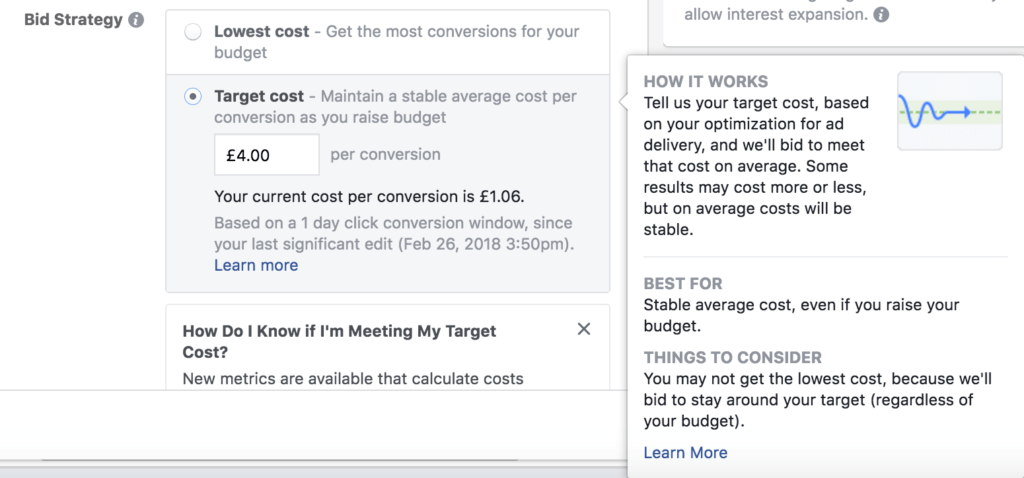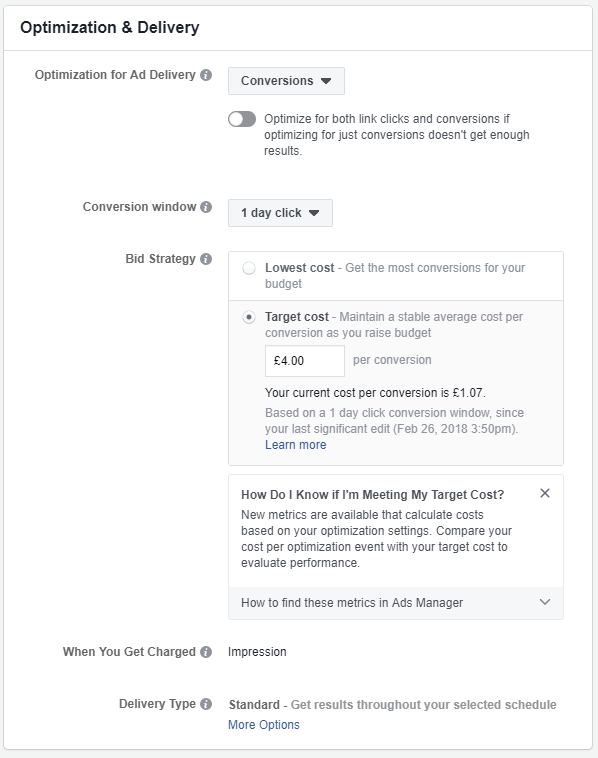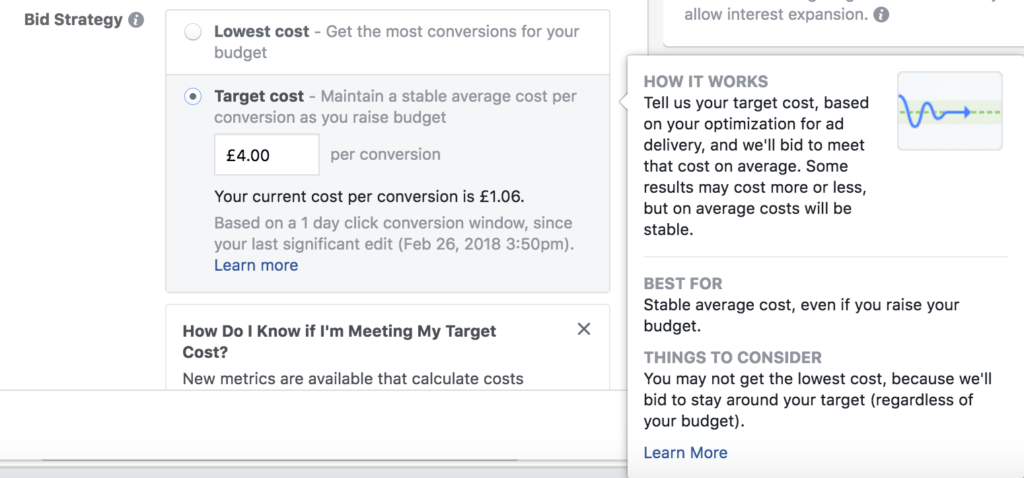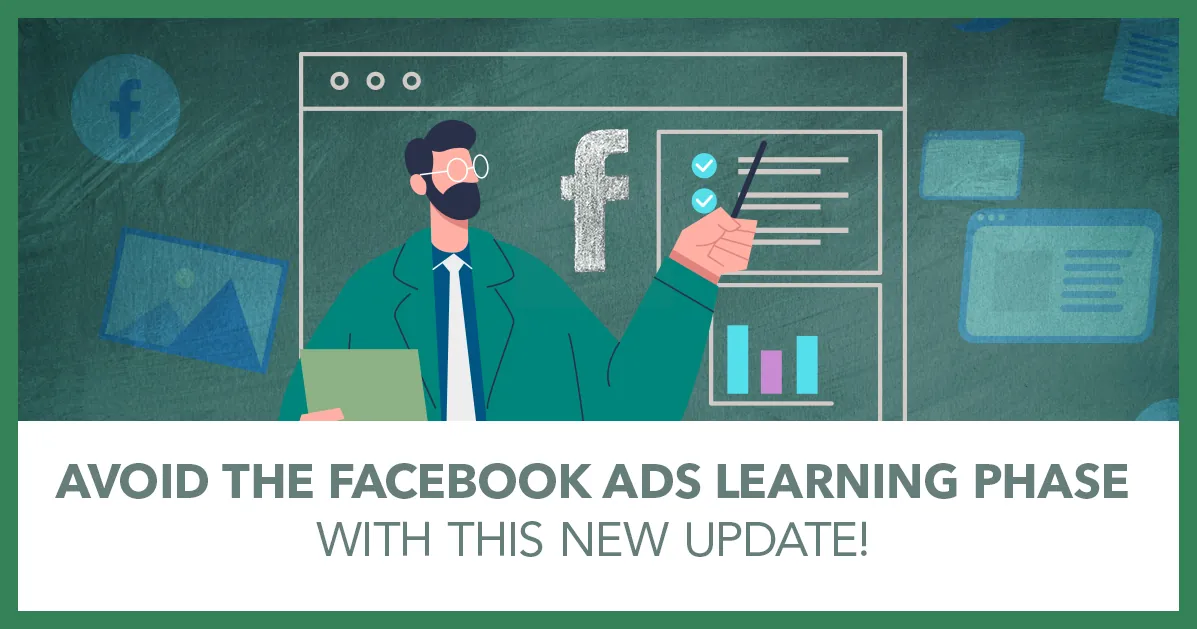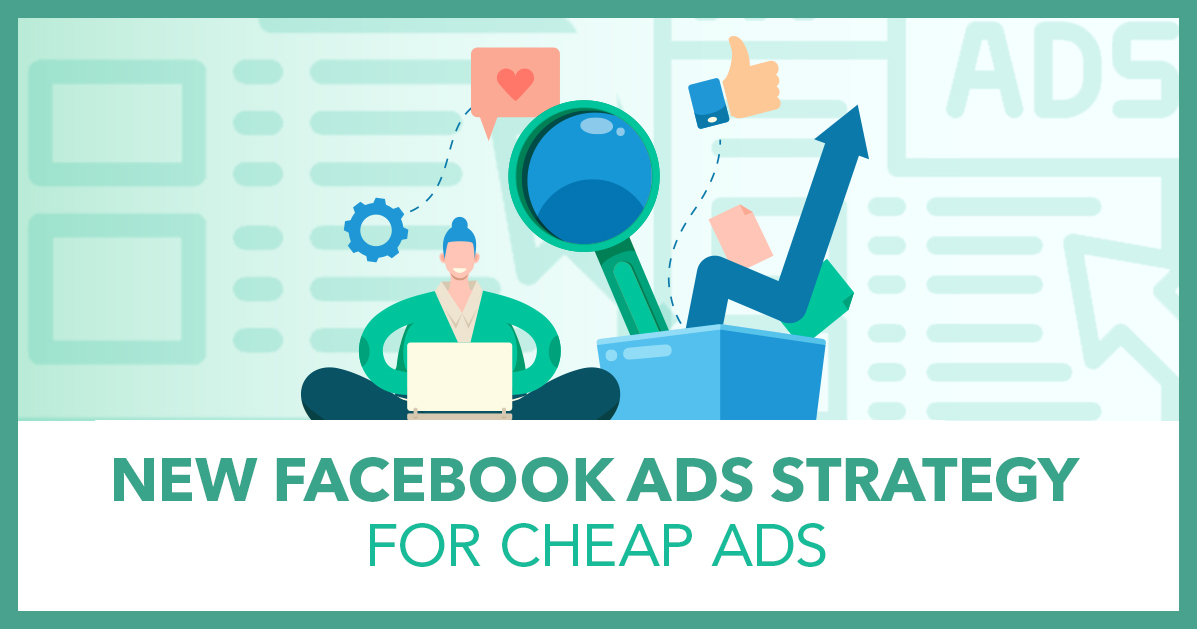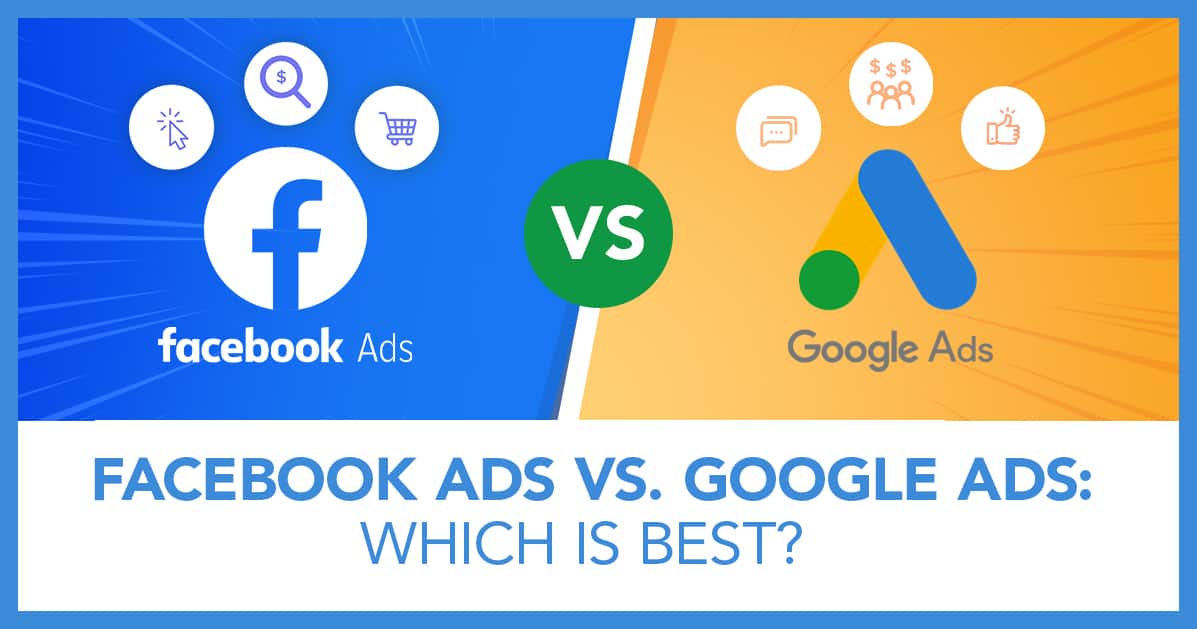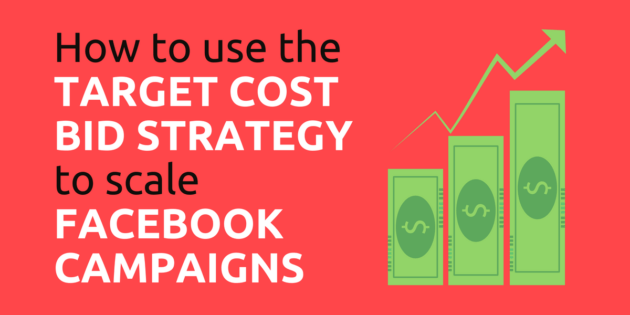
How to Use the Target Cost Bid Strategy to Scale Facebook Campaigns
Many advertisers have scaled initially profitable Facebook ad campaigns and seen their ad costs skyrocket as a result. As you spend more, you advertise to a larger number of people and the larger your audience is, the less specific it becomes. Facebook is aware of this problem and they have created the target cost bid strategy to try and remedy it.
What is the Target Cost Bid Strategy?
Target cost used to be called manual bidding and is one of two Facebook ad bidding strategies.
Both its current and former name help describe what it is, and does.
The default bidding strategy that Facebook applies to your ad sets is Lowest Cost.
With this strategy, your bid is automatically handled by Facebook. They will try to get you the lowest cost per result possible.
This strategy can and normally does lead to the lowest cost in the short run.
But over the long run, or when you try to scale your campaigns, it can create the scaling issues I mentioned previously.
Target cost on the other hand allows you to take a longer term approach with your Facebook ad campaigns.
Here’s how Facebook explains the Target Cost ad bid strategy:
“Tell us your target cost, based on your optimization for ad delivery, and we’ll bid to meet that cost on average. Some results may cost more or less, but on average costs will be stable.”
When Can You Use the Target Cost Bid Strategy?
The Target Cost bid strategy is not available in every scenario.
Only campaigns that optimize for a particular event – purchase, lead, app install, etc. can use this bid strategy.
This bid strategy is available for the following 4 Facebook ad campaign objectives:
- Conversions
- Lead Generation
- App Install
- Product Catalog
You can set a Target Cost for your campaign at the ad set level in the Optimization for Ad Delivery section:
Pros & Cons of the Target Cost Bid Strategy
From the definition above you get a good idea of the trade-offs of using this bid strategy.
Initially your cost per result is likely to be higher. Particularly during the learning phase (less than 50 of the result you’re optimizing for).
Also, if you set your target cost at something that is too low to be attainable, Facebook will simply stop running your ads.
However, a stable longer term cost per result is very appealing. Particularly if you’re running Facebook ad campaigns for clients.
I think there is a huge benefit in avoiding the emotional rollercoaster of generating really cheap conversions for a week or two, getting really excited about the results and then seeing those results dive off a cliff the moment you scale your ad budget.
Theoretically this bid strategy should also generate a lower cost per result overall, if you significantly scale your campaign or run it for a long time.
[feature_box style=”8″ only_advanced=”There%20are%20no%20title%20options%20for%20the%20choosen%20style” alignment=”center”]
Would you like us to create, manage and optimise Facebook ad campaigns for you?
To find out more about how we can help, you can book a free 30-minute strategy session here.
[/feature_box]
What to Set As Your Target Cost
It’s important to remember that Facebook will not spend more than the Target Cost you set, to achieve a specific result.
If you set a target cost per lead for example of $10 and your average cost per lead so far is $30, then Facebook will not spend your ad budget and your reach will be significantly reduced.
You can see from the screenshot below that Facebook has automatically suggested a Target Cost of £4.00 per lead for this campaign:
This campaign has been running for a while and has generated over 16,000 leads for an average of £1.06 each.
Their recommendation for my Target Cost is way over what I’m already paying. And whilst I think that’s too high, I do think it’s important to start with a Target Cost that is higher than what you’re currently getting.
I would recommending starting with the maximum you’re willing to pay for a certain result and then adjusting your Target Cost downwards from there.
You want to keep adjusting downwards until you no longer can, whilst spending your daily ad budget.
When adjusting your ad budget it’s important to note that it’s best to wait until you have generated at least 50 results between each adjustment.
This gives Facebook’s algorithms a chance to go through the learning phase and provide you with a representative cost per result.
When to Use the Target Cost Bid Strategy
Facebook recommend that you use this bid strategy for campaigns that you are likely to scale or run for a long time.
That suggests the majority of campaigns should use the Target Cost bid strategy. Almost all the marketers and business owners I have worked with, like the idea of scaling their campaigns once they start delivering results.
However, at this point I’m not convinced this bid strategy should be used in all those scenarios.
I like to use the bid strategy for campaigns that have already proven they can deliver results.
The only Facebook ad campaigns I can confidently say I will scale or run for a long time, are ones that have already generated a great ROAS.
It’s too hard to predict whether or not a campaign will be successful before it’s live.
Therefore, I like to test campaigns using the Lowest Cost bid strategy first. Establish that they are profitable and then use the Target Cost bid strategy to help me scale.
But when I start using the Target Cost bid strategy, I don’t adjust my existing ad sets from Lowest Cost.
Instead, I duplicate my ad sets and set a Target Cost for the new ones only.
This is because Facebook have recently made adjustments to these bid strategies and will continue to do so.
And as with everything Facebook advertising, I think it’s really important to run tests.
[feature_box style=”10″ only_advanced=”There%20are%20no%20title%20options%20for%20the%20choosen%20style” alignment=”center”]
IMPORTANT: If you haven’t yet seen my FREE training on Facebook Ads Strategy, I’d strongly recommend you check it out right now:
3 Killer Facebook Ads Strategies To Double (Or More!) Your Revenue!
If you want Facebook Advertising to be the engine that powers substantial growth in your business – this may be the most important thing you ever watch.
[/feature_box]
Test Both Bid Strategies
So far, I’ve had mixed results testing Target Cost alongside Lowest Cost.
Which one works best for your Facebook ad campaigns will depend on your specific scenario and how much these Facebook ad bidding strategies are adjusted going forward.
I would recommend testing both alongside each other. You’ll find out fairly quickly which performs best, particularly if you scale.
The couple of minutes it takes to duplicate an ad set and adjust the bid strategy are well worth finding out.
What has your experience of using Facebook’s Target Cost bid strategy been?
Leave a comment below to let me know.


